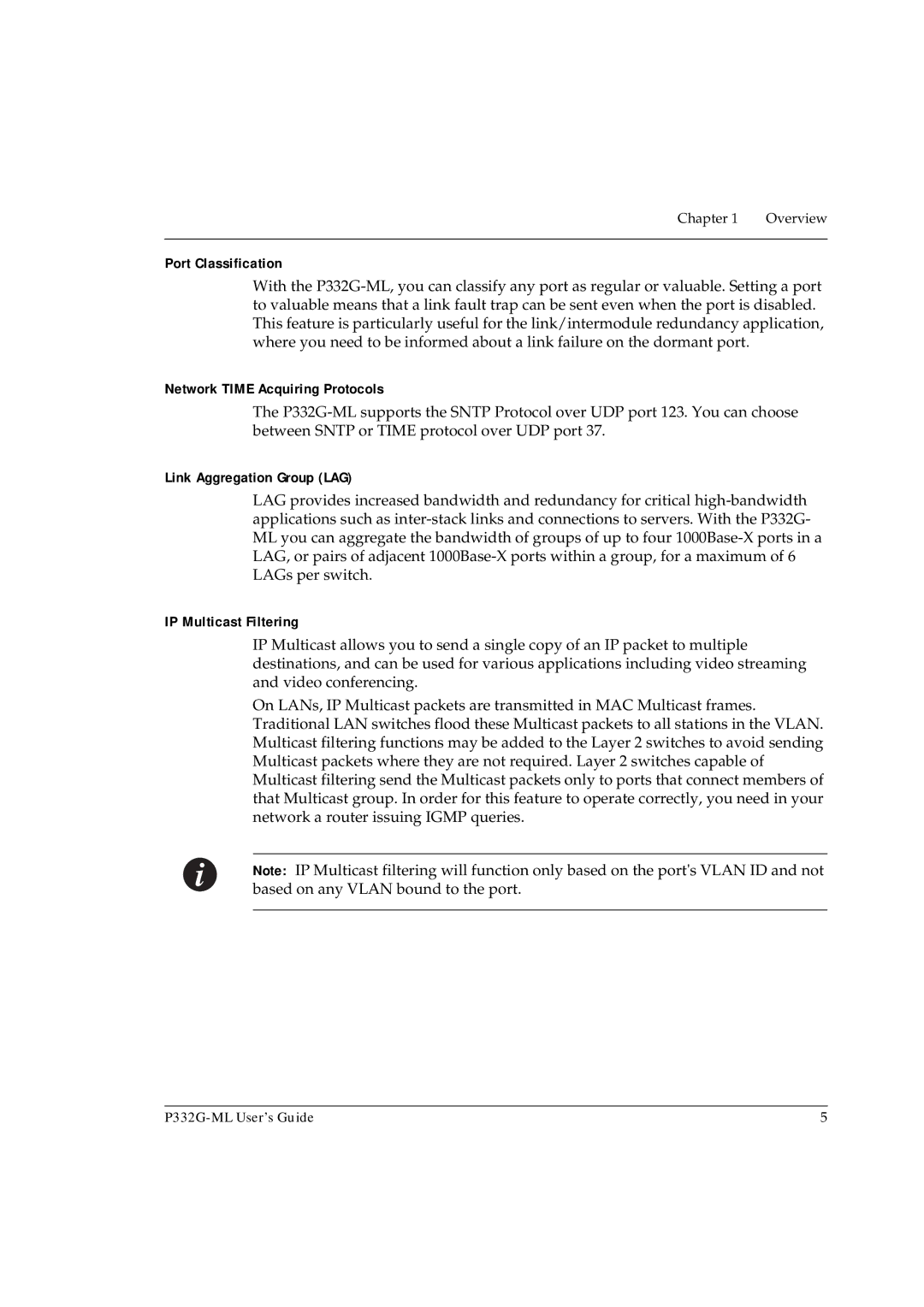
Chapter 1 | Overview |
|
|
Port Classification
With the
Network TIME Acquiring Protocols
The
Link Aggregation Group (LAG)
LAG provides increased bandwidth and redundancy for critical
IP Multicast Filtering
IP Multicast allows you to send a single copy of an IP packet to multiple destinations, and can be used for various applications including video streaming and video conferencing.
On LANs, IP Multicast packets are transmitted in MAC Multicast frames. Traditional LAN switches flood these Multicast packets to all stations in the VLAN. Multicast filtering functions may be added to the Layer 2 switches to avoid sending Multicast packets where they are not required. Layer 2 switches capable of Multicast filtering send the Multicast packets only to ports that connect members of that Multicast group. In order for this feature to operate correctly, you need in your network a router issuing IGMP queries.
Note: IP Multicast filtering will function only based on the port's VLAN ID and not based on any VLAN bound to the port.
5 |
